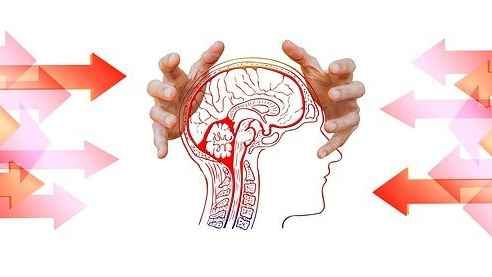Nature of migraine
Migraines are an intense pulsating headache that can last for hours or even days. This throbbing pain usually starts from the forehead, on the side of the head or around the eyes, as the headache gradually worsens. Almost any movement, activity, bright light or loud noise contribute to more intense pain. Common during migraines are nausea and vomiting as concomitant symptoms triggered by the autonomic nervous system. According to some scientific data, vomiting has also been reported by some patients as therapeutic and may actually stop migraine attacks. [Ref. 2]
This unpleasant problem can catch up with us once or twice a year, but it can also torment us much more often. Statistics show that women are more likely to suffer from migraines than men. [ref. 3] One of the proven reasons for this is hormonal changes in women's lives: events such as menarche, menstruation, pregnancy and menopause, as well as the use of hormonal contraceptives and hormone replacement therapy can affect the frequency of migraine attacks. [Ref. 4]
Although there are methods and techniques for pain relief, there is no universal treatment. In fact, we don't even know what causes migraines, although there are many theories.
Hormonal fluctuations, imbalance in the chemical composition of the brain, defective genes, the interaction of the brain stem with the trigeminal nerve, limited blood circulation in the brain - they are all prevalent theories at one point or another. An interesting new study helps us with knowledge about the complex nature of migraines and what causes them.
The study by the researchers from the University of California - San Diego
,A new study by a team of researchers from the University of California - San Diego, provides compelling evidence that the head may not be the source of migraine headaches, but rather a person's digestive tract.
Some bacterial species inhabiting parts of the gastrointestinal tract, such as the mouth and intestines, contribute to this. These bacteria break down nitrates - compounds found in certain foods that eventually turn into nitric oxide. It is the same compound activated by Viagra, which in turn dilates blood vessels to induce an erection. By the way, headaches are also a common side effect of certain drugs for the heart containing nitrates.
Although such expansion is rather beneficial to the cardiovascular system, as it improves blood flow, on the other hand it can cause too much blood to pump through the brain and scalp, causing migraines. We have known for a long time that foods containing nitrates, such as red wine, processed meats and some vegetables, can cause migraines. High levels of nitrates are the reason for this. However, the intervention of bacteria in this cascade of events is a new aspect that we will explore in a moment.
Researchers from the University of California - San Diego conducted a study published in the journal "mSystems". Lead author Antonio Gonzalez and programmer-analyst Rob Knight examined 1996 faeces samples and 172 oral samples collected from migraine sufferers. All participants are part of the "American Gut Project". This is the largest research project ever conducted in the United States.
Thousands of people have given samples to be analysed for the composition of their microbiome or gut bacteria. Healthy human intestines contain thousands of species, which, taken together, number trillions. The exact composition of each person's microbiome is as unique as its fingerprint. But the imbalance in the types of bacteria that inhabit the intestines leads to certain health problems.
The samples were genetically sequenced to detect what bacteria were present in the microbiomes of those studied. This study proves a link between nitrate-fed bacteria and migraines, but not causation. Further studies should confirm or dismiss the question of whether these bacteria are the main component or simply act as a trigger.
At the same time, the research team suggests migraine sufferers avoid all foods containing nitrates. They also speculate that someday "magical probiotic mouthwash" could become a viable treatment to overcome migraines.










